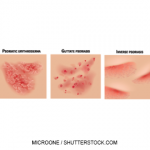For the remaining seven indications (29%), studies were progressing according to target timelines. Clinical benefit had not yet been confirmed for eight indications that had been initially approved at least five years prior. The most common surrogate measure in the preapproval studies was disease response, because many drugs were cancer agents. Other surrogate measures included time-to-event outcomes, such as progression-free survival and time-to-sputum culture conversion; and change in baseline biomarker levels, such as liver iron concentration. Most requirements were for randomized clinical trials (n=25); the rest (n=13) were single-group studies, including long-term extensions of preapproval studies.
Among the 22 drugs with 24 indications granted FDA accelerated approval in the studied timeframe, efficacy was often confirmed in post-approval trials a minimum of three years after approval in most studies. The confirmatory and preapproval trials had similar study elements, including using surrogate measures as outcomes. Although this type of evaluation has many limitations, the information can be useful in evaluating post-marketing safety and effectiveness for use in patients.
Secukinumab Meets 5-Year Benchmark for Psoriasis
In 2015, the FDA approved secukinumab (Cosentyx), the first fully human IL-17A inhibitor approved to treat psoriasis, psoriatic arthritis (PsA) and ankylosing spondylitis (AS).2 And data recently presented at the 26th European Academy of Dermatology and Venereology (EADV) Congress in Geneva, Switzerland, demonstrates sustained efficacy and safety. The research in patients with moderate to severe plaque psoriasis showed that secukinumab conveyed a high rate of and long-lasting skin clearance at five years.
In the SCULPTURE study, Psoriasis Area and Severity Index (PASI) 75 responders at Week 12 were randomized to double-blind maintenance treatment of 300 or 150 mg secukinumab given at a four-week, fixed-interval regimen or as needed. Patients who completed 52 weeks of the SCULPTURE study (N=642) were eligible to continue the same dose and regimen in the extension study. The five-year extension study (A2304E1) is a multicenter, double-blind and open-label extension of the Phase 3 SCULPTURE study.
The primary objective of the open-label extension was to assess the long-term safety and tolerability of secukinumab in patients with moderate to severe plaque psoriasis. Efficacy measures were the proportion of patients achieving PASI 75, PASI 90 and PASI 100. At Year 1, the PASI 75 response rate was 89%, and the PASI 90 response rate was 69%. This high rate was maintained at Year 5, with a PASI 75 response rate of 89% and a PASI 90 response rate of 66%. Additionally at Year 1, 44% of psoriasis patients achieved completely clear skin (PASI 100), and this rate was maintained to Year 5 (41%). The drug continued to exhibit a favorable and consistent safety profile, with low immunogenicity.


